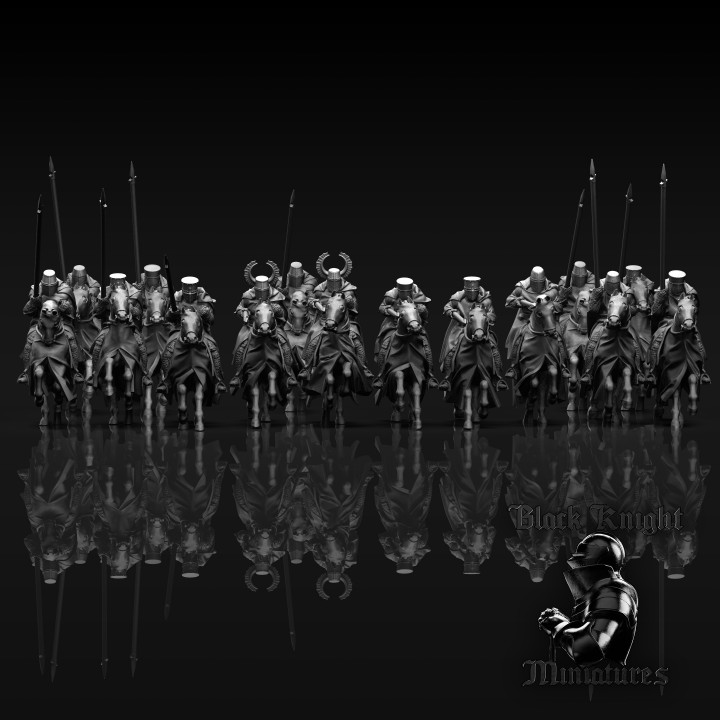
13th century - Mounted Teutonic Knights (Ritterbrüder) x 10
myminifactory
This kit is modular and includes: 10 separate riders 10 separate horses 3 separate shields 1 separate lance All models are supplied as both Pre-Supported and Unsupported 28mm scale STLs and LYS files. 13th century mounted Teutonic Knights (Ritterbrüder) during the time of the Prussian Crusade - Unfolding during the 13th century, The Prussian Crusade provided a backdrop for the Teutonic Knights to pursue their ambitions. This endeavor, characterized by its oppressive measures, land appropriations, and the creation of the Monastic State of the Teutonic Knights, represents a somber and troubling chapter in the chronicles of medieval European history and religious strife. In the 13th century, horses held a position of paramount importance for knights across Europe. These warriors relied on their steeds for a multitude of critical roles in their military and social lives. From the perspective of the Teutonic Knights, cavalry played a pivotal role in their military campaigns, as these mounted warriors were the backbone of the Teutonic Order's military force. On the battlefield, horses provided knights with the mobility, speed and strenght necessary to engage in decisive charges and swift tactical movements. Beyond the battlefield, horses were an essential means of transportation, allowing knights to traverse long distances and reach remote regions quickly, but were also symbols of prestige and social standing, as the ownership of well-bred and well-maintained horses demonstrated the knight's wealth and influence. In the Baltic regions, however, the advantage and importance of cavalry lost its relevance. During the Crusade, in fact, most of the combat consisted of skirmishes and raids that took place within a region characterized by deciduous forests, heathland, and marshes. This type of terrain hindered the mobility of cavalry, and in fact many times heavy horses became an impediment to the knights, that were often forced to dismount and fight on foot through the rough terrain. The most typical body armour used by knights, and subsequently the teutonic knights, in the 13th century was the maille hauberk, usually with each ring having five others passed through it and riveted closed. The rising importance of cavalry and their greater need for protection led to significant changes in armour, including mail hauberks that reached to mid-thigh, with the so called rider-split, and with wrist-length sleeves; thereafter, mail mittens were added to protect the hands. A subsequent development was mail leggings, supported by a belt or strapped around the rear of the legs. Another development was the maille coif, replacing the earlier mail avential that was sometimes attached to the rims of helmets. Underneath the maille was the aketon, padded cloth meant to absorb the blunt impacts and shocks of blows. Flat top greathelms and enclosed helmets were used in the 13th century, especially on horseback: often worn above a smaller round plate helmet called "cervelliere", it provided protection from the risk of lance impact with the head. The teutonic brothers were ordered to dress somberly and to avoid excess, so here they are depicted with long sleeved surcoats to cover as much of their armor as possible, and white mantles that were a sign of knighthood, as dictaded form the order's code.
With this file you will be able to print 13th century - Mounted Teutonic Knights (Ritterbrüder) x 10 with your 3D printer. Click on the button and save the file on your computer to work, edit or customize your design. You can also find more 3D designs for printers on 13th century - Mounted Teutonic Knights (Ritterbrüder) x 10.
